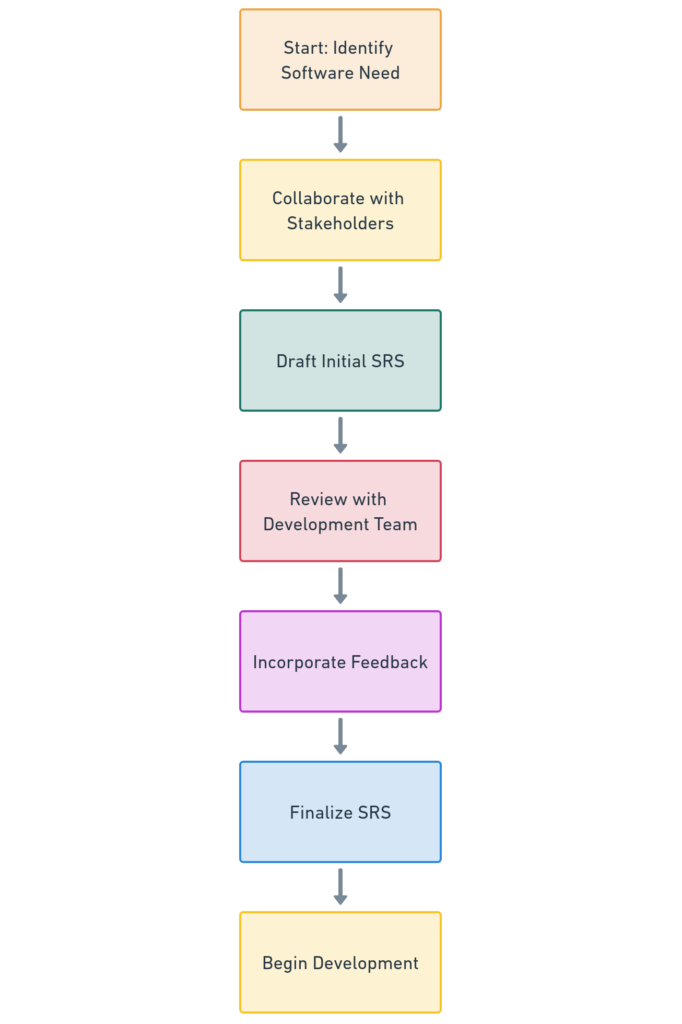The Art of Crafting a System Requirements Specification (SRS)
In the realm of software development, the System Requirements Specification (SRS) is a cornerstone. It’s the blueprint that guides developers, ensuring that the software meets the needs of its users. But how do you craft an effective SRS? Let’s delve into the world of SRS and understand its significance, structure, and best practices.
Understanding the System Requirements Specification (SRS)
Every piece of software has a purpose. Whether it’s to automate a process, facilitate a task, or entertain, there’s a reason for its existence. The SRS is the document that captures this purpose in detail. It outlines every operation, every interaction, and every expectation. From what a button should do to how the software should behave in its environment, the SRS covers it all.
Why is the SRS Crucial?
- Clarity and Understanding: An SRS ensures everyone, from stakeholders to developers, understands the software’s capabilities and limitations.
- Design and Development Blueprint: It serves as the foundation for designing and developing the system.
- Communication Tool: It bridges the gap between stakeholders and the development team.
- Quality Assurance: The SRS is a reference for testing, ensuring the software meets its requirements.
- Maintenance Guide: It’s a living document, updated throughout the project, serving as a reference for future updates.
- Cost Efficiency: A clear SRS can reduce development time and costs.
Crafting the Perfect SRS

A well-structured SRS answers pivotal questions:
- What is the software’s purpose? This identifies its main functionalities.
- How should it behave? This covers interactions with its environment and users.
- What are the performance benchmarks? This includes response times and error handling.
- Are there any constraints? This could be design, development, or deployment constraints.
A typical SRS structure might include:
- Introduction: This section sets the stage, explaining why the software is being developed, its users, and its scope.
- General Description: Here, you’d detail the software’s functionalities, hardware interfaces, and user interfaces.
- Specific Requirements: This section dives deep into the details, from input-output descriptions to performance criteria.
- References: Any additional reading or documents that can aid in understanding the SRS.
Pitfalls to Avoid

While crafting an SRS, there are some common pitfalls:
- Incomplete Definitions: Ensure all jargon and technical terms are clearly defined.
- Mixing Concepts: Keep information organized and avoid clutter.
- Ambiguity: Ensure every requirement is clear and open to only one interpretation.
The Difference Between Good and Bad SRS
Consider an ATM system. A poorly written specification might vaguely state that a user can select an amount to withdraw, and the system checks if the transaction is possible. A well-written SRS, on the other hand, would detail the exact amounts available for selection, the validation process, the interaction steps, and the expected outcomes for various scenarios.
Collaboration is Key
Creating an SRS is a collaborative effort. It involves:
- Project Managers: Overseeing the SRS’s accuracy and completeness.
- Development Team: Providing technical feasibility insights.
- Product Owners/Business Analysts: Representing end-user needs.
- Quality Assurance Team: Ensuring requirements are testable.
- Subject Matter Experts: Offering domain-specific knowledge.
- Stakeholders: Ensuring their needs are addressed.
In Conclusion
A well-crafted SRS is the bedrock of successful software development. It ensures clarity, reduces development time, and guarantees that the end product aligns with user needs. Investing time in creating a comprehensive SRS is an investment in the software’s success.


